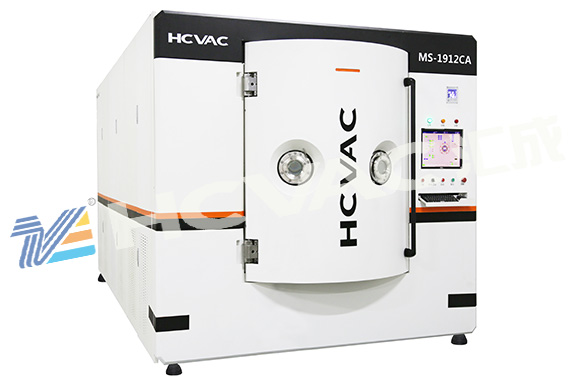Most of the magnetron sputtering vacuum coating machines use magnetron sputtering coating technology. The so-called "sputtering" refers to the phenomenon that charged particles bombard the solid surface (target), so that solid atoms (or molecules) are ejected from the surface. Most of the ejected particles are in the atomic state, often referred to as sputtered atoms. The energetic particles used for bombarding the target may be electrons, ions or medium-sized particles, because ions are easily accelerated under an electric field and obtain the required kinetic energy, so ions are mostly used as bombarding particles. This particle is also called incident ion. Since the mechanism that directly realizes sputtering is ions, this coating technology is also called ion sputtering coating or deposition.

There are many coating methods of magnetron sputtering vacuum coating machine, and the more representative methods are:
1. DC diode sputtering. The structure is simple, a uniform film can be produced on a large-area substrate, and the discharge current changes with the change of pressure and voltage;
2. Triple or quadrupole sputtering. Low gas pressure, low voltage sputtering can be achieved, and the discharge current and the ion energy of the bombardment target can be independently controlled. The target current can be controlled, and radio frequency sputtering can also be performed;
3. Magnetron sputtering (or high-speed, low-temperature sputtering). Apply a magnetic field in a direction parallel to the target surface, and use the magnetron principle that the electric field and the magnetic field are orthogonal to reduce the bombardment of electrons on the substrate and achieve high-speed and low-temperature sputtering;
4. Sputtering against the target. Two targets are placed opposite to each other, and a magnetic field is applied in the direction perpendicular to the surface of the target, which can perform high-speed and low-temperature sputtering on magnetic materials;
5. Radio frequency sputtering. It is developed for the preparation of insulating films, such as silicon oxide, aluminum oxide, glass films, etc., and can also sputter metals;
6. Reactive sputtering. Compound films that can be used to make cathode materials, such as titanium nitride, silicon carbide, aluminum nitride, aluminum oxide, etc.;
7. Bias sputtering. During the coating process, the light-weight charged particles on the substrate are removed at the same time, so that the substrate does not contain impure gas;
8. Asymmetric AC sputtering. The target is sputtered in a half cycle with a large amplitude, and the substrate is bombarded with ions in a half cycle with a small amplitude to remove the adsorbed gas to obtain a high-purity thin film;
9. Ion beam sputtering. Under high vacuum, the use of ion beam sputtering is a film formation process in a non-plasma state. Target ground potential is also available;
10. Inhalation sputtering. The impurity gas is removed by the gettering effect of the sputtered particles, and a thin film with high purity can be obtained.
The above 10 types are the magnetron sputtering coating methods used by the
magnetron sputtering vacuum coating machine. The customers have relatively high requirements on the adhesion, structure and morphology of the substrate film, and most of them use the vacuum magnetron sputtering coating technology.



